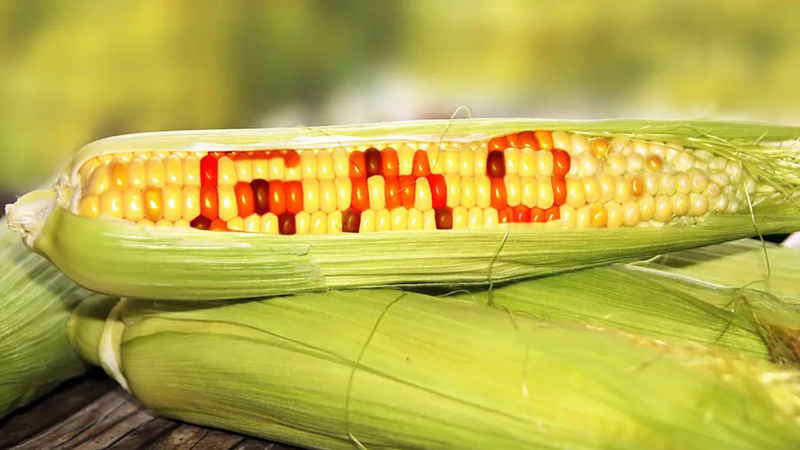GM acceptance one step in China’s modernization efforts

China is about to start growing genetically modified crops.
China has long accepted imports of genetically modified crops but did not grow them itself except in pilot tests. China did, however, grow GM cotton.
That is changing.
In December the government gave licences to 26 domestic seed companies to produce and commercially sell GM corn and soybean seeds.
The goal is to increase domestic yields and total production to reduce the country’s reliance on imported grain.
China has slowly built up the capacity of domestic seed breeders to create lines that are competitive with multi national seed companies.
One of the companies approved for GM crop commercialization is Beijing Dabeinong Technology 002385.SZ . It said GM could hit 85 percent market penetration in three to five years, according to reporting by Reuters.
The government in Beijing hopes introducing GM traits such as herbicide and pest resistance will help close the gap between China’s low yields and those in the United States, Canada and South America.
In the past five years, American average corn yield has been about 173 bushels per acre.
In China in the same period the average yield was only 101 bu. per acre, according to statistics from the U.S. Department of Agriculture.
The American average five-year soybean yield was about 50 bu. per acre, while China’s was only 29.26 bu.
Many genetic and environmental factors affect yields, so new GM traits alone won’t magically cause parity between Chinese and western crop yields.
But these traits should have a positive effect.
A Sept. 23, 2023, story in the China Daily said yield of the GM crops in trials showed a modest improvement of 5.6 to 11.6 percent over conventional lines.
Let’s try to get a rough idea of what that type of yield improvement would mean to overall production if it was applied to all acreage.
The mid-point of the range of improvement is 8.6 percent.
China’s 2023 corn crop was 288.8 million tonnes and its imports are forecast to be 23 million tonnes for the year. Since 2020-21 China has been the world’s leading corn importer.
This is only a mathematical exercise and many factors could affect real world production and demand, but it is easy to see how a significant improvement in China’s yield could affect world corn trade.
China is far more reliant on imports for its soybean needs.
Its soybean crop in 2023 was 20.8 million tonnes and its imports are forecast at 102 million tonnes. An 8.6 percent increase to its production would have added only 1.79 million tonnes, so it still would need massive soybean imports.
For canola/rapeseed, its production was 15.4 million tonnes and imports are forecast at 3.4 million. An 8.6 percent increase in domestic production would add 1.3 million tonnes, which would have a big impact, but not eliminate imports.
It will be interesting to watch the real world impact as GM traits spread across Chinese farms.
But as noted, there is much more to successful production than just GM seeds.
A big issue that China’s agricultural sector will soon have to face is the declining population of working age people in rural areas.
We heard last year the shocking news that China’s population had shrunk for the first time and that India had become the most populous country. The latest population estimates show China got smaller again this year.
The effects of the one child policy that ran from 1980 to 2016 are becoming visible.
However, rural population has been impacted far more by the country’s huge leap into industrialization and urbanization.
Hundreds of millions of young people moved from the country to mega cities, where their standard of living would be much better. Disposable income for people in urban areas is about twice that of their rural counterparts.
The average age in rural areas is significantly older than in urban areas.
There was an interesting analysis of the demographics of rural China posted on the Dim Sums site Aug. 27, 2023, that is well worth the read.
China’s leaders are always giving lip service to the importance of the agricultural sector, but the rural demographic time bomb is ticking toward crisis. The implication is that as the rural population ages and shrinks, there will have to be a massive move to mechanize, modernize and consolidate farms and to make farming appealing to young people to maintain production.
Acceptance of GM crops is but one small step in this urgent journey.
Read also
Wheat in Southern Brazil Impacted by Dry Weather and Frosts
Oilseed Industry. Leaders and Strategies in the Times of a Great Change
Black Sea & Danube Region: Oilseed and Vegoil Markets Within Ongoing Transfor...
Serbia. The drought will cause extremely high losses for farmers this year
2023/24 Safrinha Corn in Brazil 91% Harvested
Write to us
Our manager will contact you soon



